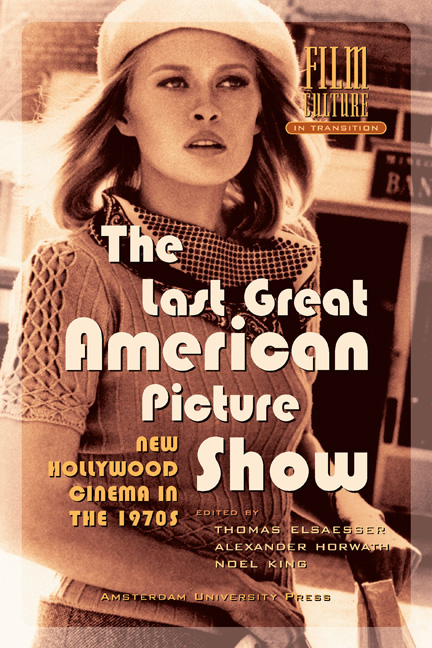Trapped in the Affection Image: Hollywood’s Post-traumatic Cycle (1970-1976)
Published online by Cambridge University Press: 25 January 2021
Summary
It has long been commonplace to talk about many American films of the late 1960s and early 1970s as being about or in response to the Vietnam experience. Even during those years, this seemed to be the case. Asked in a 1972 interview about the curious absence of any films about the Vietnam war, Pauline Kael replied, “Vietnam we experience indirectly in just about every movie we go to. It's one of the reasons we’ve had so little romance or comedy – because we’re all tied up in knots about that rotten war.” Though any number of films from this period may be discussed in relation to Vietnam, I would like to focus here on a group of deeply pessimistic Hollywood films from the first half of the 1970s – a groupthat may be dubbed the ‘post-traumatic cycle’, a term I will explain shortly. This cycle includes (but is not limited to): MIDNIGHT COWBOY, FIVE EASY PIECES, MCCABE & MRS MILLER, THE CANDIDATE, DELIVERANCE, MEAN STREETS, THE SUGARLAND EXPRESS, THE CONVERSATION, CHINATOWN, THE PARALLAX VIEW, CALIFORNIA SPLIT, NIGHT MOVES, DOG DAY AFTERNOON, and SHAMPOO. It is this cycle, I want to suggest, that stands most clearly as America's first round of Vietnam films. Although none is set in and only a few make explicit reference to that war, these films represent and replay, in a displaced fashion, the Vietnam war's defining experience: the onset of trauma resulting from a realisation of powerlessness in the face of a world whose systems of organisation – both moral and political – have broken down. Or, to use a different set of terms, this cycle of films exemplifies what Gilles Deleuze has described as a “crisis of the action-image”.
The Crisis of the Action Image
In his two volume study – Cinema 1: The Movement-Image and Cinema 2: The Time-Image – Deleuze borrows the concepts of movement and time articulated by Henri Bergson in Matter and Memory and applies them to the history of cinema, developing as he does a typology of images and signs. From this typology, he concludes that, for the first half of its existence (and in most of its product since), cinema has been content to reproduce human perception of movement, and its plots have largely been driven by movement's corollary: action.
- Type
- Chapter
- Information
- The Last Great American Picture ShowNew Hollywood Cinema in the 1970s, pp. 293 - 308Publisher: Amsterdam University PressPrint publication year: 2004



